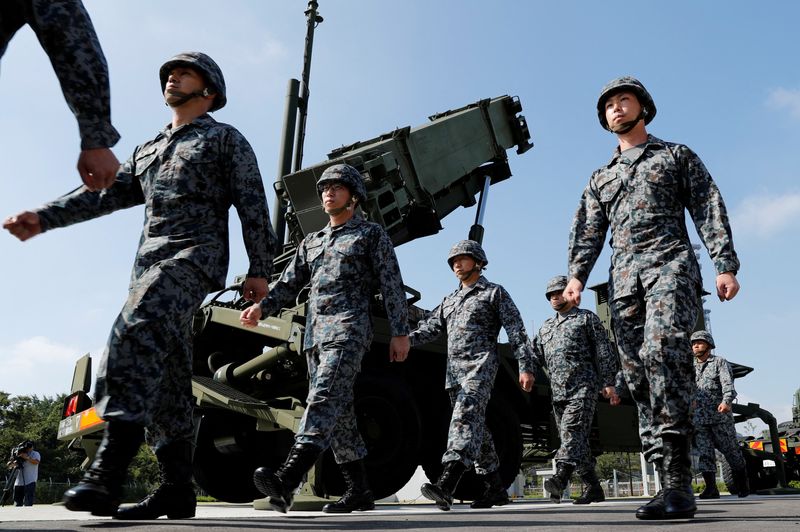By Nobuhiro Kubo and Tim Kelly
TOKYO (Reuters) – A U.S. plan to use Japanese factories to boost production of Patriot surface-to-air missiles used by Ukraine to defend against Russian attacks is being delayed by a shortage of a key component made by Boeing, four people said.
Japan's Mitsubishi Heavy Industries (MHI) already produces about 30 PAC-3 missiles a year under license from defense contractor Lockheed Martin and could increase that number to about 60, two Japanese government officials and two industry sources told Reuters.
The U.S. hopes to quickly increase production from about 500 a year to more than 750 a year globally, a person familiar with the program said. But no expansion will be possible in Japan without additional supplies of the missiles’ seekers, which guide them through the final stages of flight, the officials and industry sources said.
“It could take several years before MHI can increase production” because of the shortage, said one of the industry sources, who like the others asked not to be named because he was not authorized to speak to the media.
Japan's production problems highlight the challenge for Washington to integrate industrial aid from its global allies into its complex supply chains.
Boeing last year began expanding its Seeker factory in the United States to increase production by 30%, though the additional lines are not scheduled to come on stream until 2027. The company did not say how many were produced last year, but noted that it had just delivered its 5,000th.
A Boeing representative referred questions to Lockheed Martin, the interceptor's prime contractor.
Lockheed Martin has said it plans to increase U.S. production of Patriot interceptors from 500 to 650 by 2027. Each aircraft costs about $4 million.
Even if sufficient seekers are available, increasing Japan's annual PAC-3 production to more than 60 would require MHI to build more capacity.
In its 2022 plan to double military spending, the Japanese government said it would offer financial aid to defense companies that wanted to expand production. However, the subsidies would apply only to equipment destined for the country’s Self-Defense Forces and not for export.
That means MHI or the United States would have to cough up the money for a new PAC-3 plant, which could cost tens of millions of dollars or more, one of the Japanese government sources said.
“The Indo-Pacific is a major area of focus for the U.S. and our allies and strategically placed capabilities in the region are critical to supporting deterrence and maintaining readiness,” Lockheed Martin said in an email, referring questions about Japan’s PAC-3 production to the Japanese and U.S. governments and MHI.
Japan's Ministry of Defense declined to comment. MHI declined to comment.
A US defense official said a $4.5 billion contract signed in June with the US Army, the main customer for the Patriot system, marked the beginning of a scale-up in production of both missiles and seekers.
Foreign and defense ministers from Japan and the United States are meeting in Tokyo this month for talks expected to deepen defense industrial cooperation. The Patriot project is seen as a key part of that effort.
Even with help from allies, supply chain bottlenecks are hampering U.S. efforts to meet Ukraine's demand for munitions, including air defense systems that can ward off Russian attacks.
In July, a children's hospital was hit by a Russian missile in the deadliest airstrike in months, killing at least 41 civilians.
In December 2023, Japan relaxed rules on the export of military weapons to allow it to replenish U.S. stockpiles of Patriot missiles, which were intended to help Ukraine.
U.S. Ambassador to Japan Rahm Emanuel called it a “historic decision” and has been a leading advocate of closer military-industrial ties with Japan, which could ease pressure on U.S. defense contractors.
US President Joe Biden and Japanese Prime Minister Fumio Kishida agreed in April to deepen cooperation in the defense industry.
In an op-ed published in the Wall Street Journal two months after that meeting, Emanuel described the shrunken U.S. military-industrial complex as a “weak link” exposed by the war in Ukraine and the conflict in the Middle East.
(Reporting by Nobuhiro Kubo, Tim Kelly; additional reporting by Mike Stone, Allison Lampert, Idrees Ali and Kaori Kaneko; Editing by Gerry Doyle and Sam Holmes)

